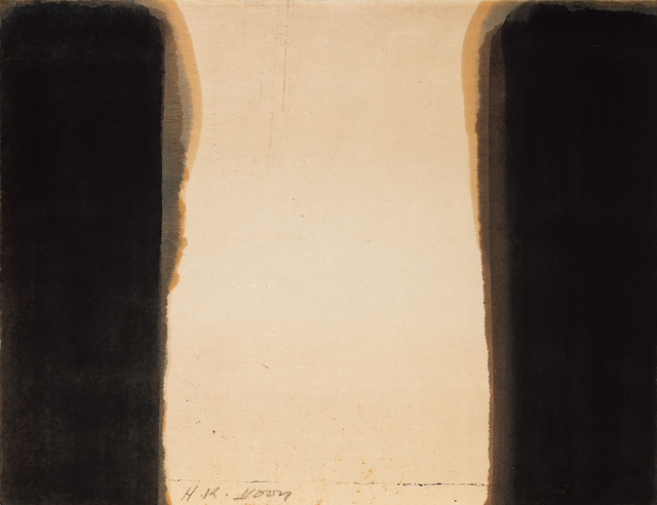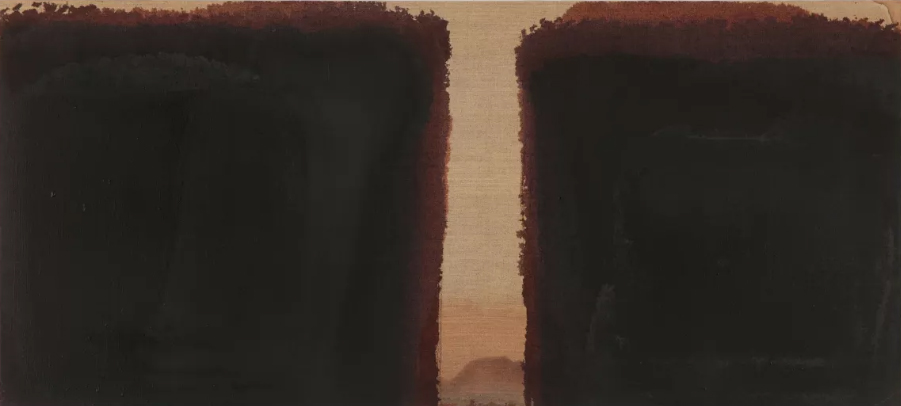20 Jun Yun Hyong-Keun
My plan for this weekend was visit Black Swan in New Norfolk, have a coffee, pick up an intriguing detective novel I’d seen on Instagram, and look through his wonderfully curated books. I found a treasure in a beautifully presented book on the artist Yun Hyong-Keun. The cover of the book drew me in. A close-up of linen with a smooth expanse of inky black and feathered edges of umber and ultramarine, seeping like ink and forming a silhouette like a landscape. The book was wrapped in plastic so further information was inaccessible until I got home. Reading about Hyong-Keun, his work resonates with my project – with the influences I have already cited (Rothko, scroll painting), the materiality of the ink on paper/canvas, and with the repetition of processes. Born in 1928 (-2007), he was part of the Dansaekhwa art movement in Korea. His work is built up over time, returning to the artwork, building up layers of pigment and oil, letting them seep into the canvas or paper for weeks or months, until the work is deep and dark. They are predominantly layered umber and ultramarine, a deep warm brown/black. Hyong-Keun described his work as “A single wail, with no small talk.” (p47), he says he is striving to “capture the eternal texture and colour directly from nature”(p135). In his representation of nature through this reiterative process

Hyong-Keun, Y. (nd), umber-ultramarine blue. Oil on paper mounted on canvas
48.2 × 62.5 cm, Wellside Gallery
Hyong-Keun Y. (1991) Burnt Umber & Ultramarine Blue, Oil on linen
45.3 x 99.8 cm Courtesy of the artist and Simon Lee Gallery
The Dansaekhwa movement (literally monochrome) in Korea is in some ways comparable to what was happening in Western modern art, but rather than the reduction of hard edge minimalism it is about layering, an exploration of materiality and a dialogue with the viewer. There are so many connecting points to explore between Dansaekhwa and the project.
- Materiality – an exploration of materials, of the processes.
- Recursion – repeated imagery and processes. An element of allowing the unexpected to then shape the ongoing process of the artwork.
- Representation – Questioning the nature of representation. The works are objects in their own right, captured processes.
- The unfinished – They require the presence of the viewer to activate them.
- Embodiment – Korean philosophy of oneness with nature.
- Index – The works are traces of the processes used to make them. Indexes of the artists’ interaction with the materials.



No Comments